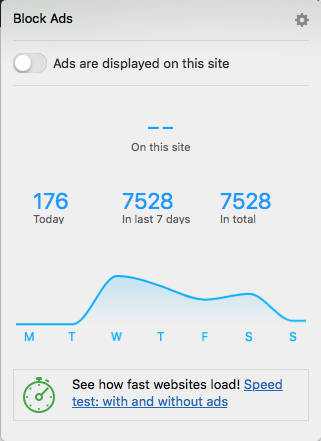Do we need an IMDB for websites? Over the course of my 15 year career as a web developer, I’ve had a hand in dozens (maybe hundreds) of websites. A handful of the top sites I’ve worked on are seen by millions of people; and much like the clapper loader, child wrangler or caterer on a big budget Hollywood film, no one would be the wiser.
Unlike an obscure Hollywood professional, the behind-the-scenes work of a web developer is rarely credited anywhere. Occasionally, our names will be buried on an “about us” or “team” page no one ever visits, sometimes we’ll leave fingerprints in an HTML comment. But the fact that’s there’s no generally recognized method for crediting the hard work that goes into web development (or other creative professions for that matter)… is a little weird and disheartening.
For coders — who don’t have pretty pictures and mockups to post in a fancy shiny portfolio — the de facto industry standard for building reputation and gaining attribution seems to be a github profile. In theory github can be a low friction source to evaluate the work of a potential hire. However, in practice there are many reasons an excellent, experienced developer might have a sparse github profile. For starters, github profiles are public and paid work is usually the intellectual property of the client paying for it, not open for public posting. Secondly, coming up with unique ideas for projects, or extra free time to contribute to existing projects can be a daunting task for a developer who’s busy balancing hobby projects against paying bills and having a life. A sparse github presence should not be seen as an indication of… anything, really.
The IMDB Model
IMDB has a lot of features, some of which might or might not make sense for website listings: user ratings, trivia, things like design and feature history, etc could be interesting for larger well known sites. But the feature I’m most interested in for the purposes of attribution is the “cast and crew” listings.
Essentially, listing every “crew” member of a web team would be a great way to present the type of recognition that I believe people in the industry deserve.
Potentially, more importantly though would be the ability to reference an individual across all the projects they’ve ever worked. On IMDB when you click through to a crew member’s profile you can quickly see all the projects they’ve ever been a part of. This could give employers and colleagues a unique view into someone’s body of work and career progression. A listing like this could fill the gaps between a resume and a github profile. If it works for Hollywood, I don’t see why it wouldn’t work for Silicon Valley.
Humans.txt
In 2011, an organization formed to promote the idea of a included a humans.txt file with all websites.
It’s an initiative for knowing the people behind a website. It’s a TXT file that contains information about the different people who have contributed to building the website.
I recall some minor buzz around this initiative and it looks like they had aspiration to make it a W3C standard. But the buzz seems to have died off very quickly, their website hasn’t changed much since mid-2011.
Humans.txt is the ideal vehicle for the type of information an “IMDB for websites” would need to know about the development team. The service could use humans.txt as a starting point to validate a website, then parse the file itself to suck in data for the listing. From there, unique individuals could be cross referenced using their twitter profile.
That’s it
I’m sure there are a tonne of challenges, as well as interesting directions and potential features, etc…this is admittedly not a fully formed idea.
What do you think?

 Using Chorium as a platform to build on allows Opera to focus on adding features. For now, their main feature is built-in ad block. It’s good, quite good. It’s not configurable like a dedicated ad block extension, but it get’s the job done.
Using Chorium as a platform to build on allows Opera to focus on adding features. For now, their main feature is built-in ad block. It’s good, quite good. It’s not configurable like a dedicated ad block extension, but it get’s the job done.